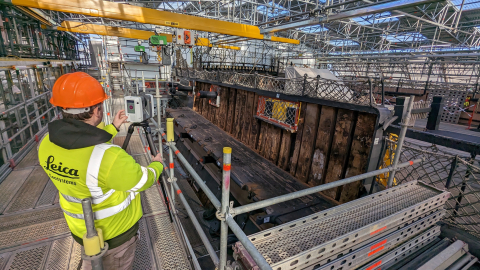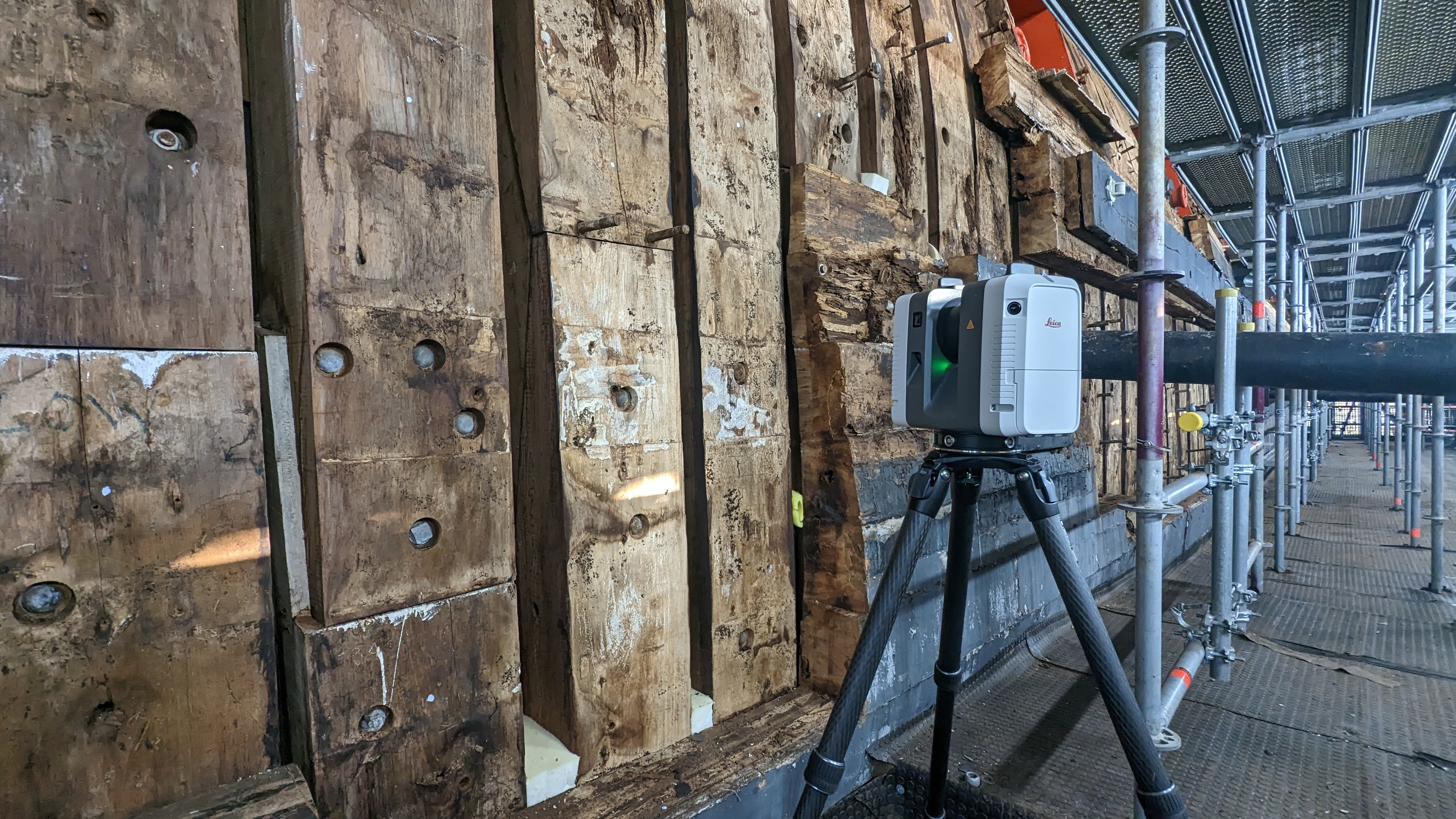How can AI be used to conserve HMS Victory?
- View news filtered by: Napoleonic
- View news filtered by: Ships and Aircraft
- View news filtered by: HMS Victory
- View news filtered by type: Blog

The conservation of an international icon like HMS Victory requires all-hands on deck, making use of both the tried-and-true historic techniques, and the cutting-edge of technology. AI and machine learning algorithms are a hot topic now, but can it help with the conservation of Vice Admiral Lord-Nelson’s flagship and the museum’s collection?
Three master’s students from the University of Southampton (Siddhi Mahendra Pawar, Donheng Wang and Arundati Roy) have set out to do just that. They're being joined by Dr. Rodrigo Pacheco-Ruiz, the National Museum of the Royal Navy’s Archaeological Data Manager, and Amy Adams, the Collections Information and Access Manager.
Since this decade long restoration began in May 2022 archaeologists have taken over 3,000 images, in addition to the high-resolution images taken, to produce multiple 3D digital models of the ship. Previously, these additional images had to be sorted and analysed manually, a time-consuming process. But now, with the aid of AI engines, this process has been automated, increasing the quality and resolution of these recordings.
It's vitally important that we have a detailed and accurate record of the ongoing conservation of HMS Victory. The AI-based algorithm matches images stored in different locations and adds them to the 3D model of HMS Victory. This ensures that the 3D modal is as detailed as possible. This record helps capture vital information about historical repairs to the ship, parts that have degraded and can even help inform the next stages of the project.
More than matching simple images, this project has pushed the boundaries of what AI is capable of. Working on incredibly high resolution, complex images, this project is also at the forefront of AI usage in archaeology, although it is a far cry from traditional perceptions of what archaeology is.

This kind of technology is not only being used on HMS Victory, but broadly within the National Museum of the Royal Navy's collection, encompassing everything from figureheads to documents to videos. The ways in which these items are catalogued have changed considerably, requiring more detailed information. We also work hard to ensure our collections are digitally available, ensuring that people from all over the world can access them. However, this does increase the workload of curators in museums.
Utilising AI for ‘entity recognition’, meaning it can retrieve and sort digital records, can be used to label records in a way that is more accessible to visitors. This means that the AI can identify and add labels to collections as needed, in such a way that it makes it easier for visitors to find relevant information even if they do not know the technical names.
It is clear that AI has applications both in collections, and in conservation projects. For HMS Victory, both the modern and historic techniques work together, as the 3D model helps inform the teams hard at work using historic techniques to conserve this icon.
You can find out more about the incredible conservation work happening onboard HMS Victory right now with our on-going exhibition Victory Live: The Big Repair. This project is expected to take up to fifty years but will ensure HMS Victory's continued survival for future generations. Our Ultimate Explorer Tickets include access to HMS Victory, Victory Live: The Big Rebuild, the Nelson Gallery, and more - letting you see the full picture. What's more, they last for an entire year, so you can see how the work progresses with each visit.